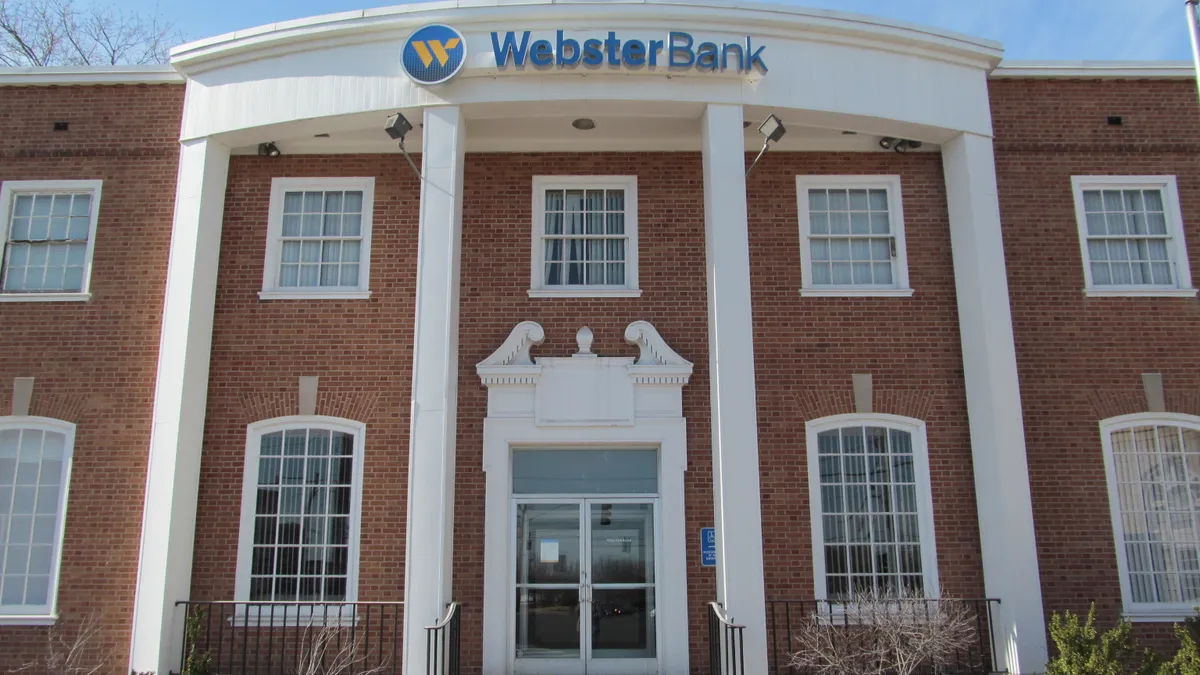Lenders continued to scramble Friday to digest a 31-page interim final rule the Small Business Administration (SBA) issued Thursday night, laying out the ground rules of the $350 billion Paycheck Protection Program, for which small businesses could apply the following day.
The program, part of the $2 trillion coronavirus stimulus package, offers loans of as much as $10 million with payments deferred for six months. The loans don’t require collateral and will be forgiven if businesses keep their workforces largely intact and use the funds for payroll costs, mortgage interest, rent and utility payments for two months and if businesses retain and rehire employees.
At least one major U.S. bank — Bank of America — had its portal up and running by around 9 a.m. Friday. However, it planned to limit the loans to customers with existing deposit accounts and loans at the bank as of mid-February, people familiar with the matter told the Financial Times.
The application window started without two systemically important U.S. banks. JPMorgan Chase told its small-business customers Thursday in a memo that because of the delay in guidance, it would "most likely not be able to start accepting applications on Friday, April 3, as we had hoped."
Wells Fargo was not accepting applications early Friday morning. The bank is working “as quickly as possible to be ready to assist small business customers,” spokesperson Kate Pulley told Bloomberg via email.
Among the changes in Thursday’s guidance: The SBA doubled — to 1% — the interest rate lenders can charge small businesses under the relief program after community banks complained that the previous rate of 0.5% was below their own cost of funds.
"We’re not talking about making a lot of money on this," Thomas Wells IV, chairman and CEO of First American Bank in Elk Grove Village, Illinois, told The Wall Street Journal. "We’re talking about being able to afford" it.
But the biggest source of uneasiness surrounding the program may be a sense of overwhelming demand. As of 11 a.m. Eastern time Friday, 1,926 loans were originated totaling almost $757 million from 245 lenders, a person familiar with matter told Bloomberg. The nation’s 30 million small businesses employ half of the private workforce. And almost a quarter of them have temporarily closed in response to the virus, and 11% are on the verge of shuttering for good in the next month, a poll released Friday by the U.S. Chamber of Commerce showed.
"There’s a sense of urgency that there's not actually enough money in the loan fund for the number of people who actually are desperately in need of help right now," Amanda Ballantyne, executive director of Main Street Alliance, an small-business advocacy group, told Bloomberg. "Business owners are sort of scrambling to make sure they can get a spot in line."
The anticipation of demand has some banks reallocating resources. Nitin Mhatre, head of community banking at Webster Bank in Waterbury, Connecticut, estimated the bank may reassign about 50 employees to process program applications.
“What Webster and what I think most banks are doing right now is just preparing their internal processes to get a significant amount of volume,” Mhatre told the Journal.
Craig Street, the chief lending officer of United Midwest Savings Bank in Columbus, Ohio, said the demand for these loans is unlike anything he’s seen. "We’re talking about attempting to do 10 times our normal monthly loan volume, and maybe more than that," he told The New York Times.
Another issue for lenders is paperwork. The proposed forms are "not as simple as we hoped," Tony Wilkinson, chief executive of the National Association of Government Guaranteed Lenders, told the Journal.
Lenders had asked for assurances that they will be "held harmless" if borrowers use inaccurate data in their applications and want to know who will be on the hook for fraudulent loans, people with knowledge of the discussions told CNBC.
"At this moment, banks are being asked to blindly sign up for the program," Peter Gwaltney, president and CEO of the North Carolina Bankers Association, told American Banker. "It’s asking a lot of banks to take on unmanageable and immeasurable risk."
Citizens Bank of Edmond CEO Jill Castilla, in a tweet Thursday, criticized the process for having "too much ambiguity and too little structure."
"The guidelines have to be clear" to ensure success, she wrote. "It is imperative that the qualifications … are explicit, simple and timely."
Paul Kupiec, an economist at the American Enterprise Institute, described the program as a "minefield" for lenders.
"If banks rush to make thousands — if not millions — of small-business relief loans, they will put themselves at risk of facing huge government fines in the future," Kupiec told American Banker. "Banks have seen this happen before, and you can bet they are not eager to see a repeat performance."
Still others are seeking patience and time.
"Having just received guidance outlining how to implement a $349 billion program literally hours before it starts, we would ask for everyone to be patient as banks move heaven and earth to get a system in place and running to help America’s small businesses and the millions of men and women who work at them," said Richard Hunt, head of the Consumer Bankers Association, according to CNBC.





















